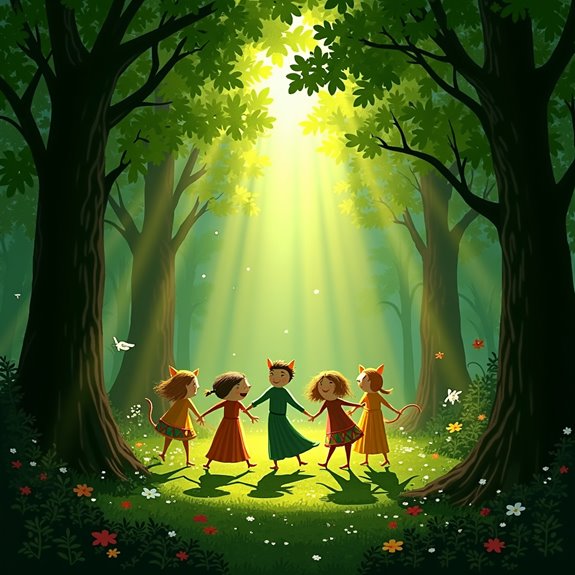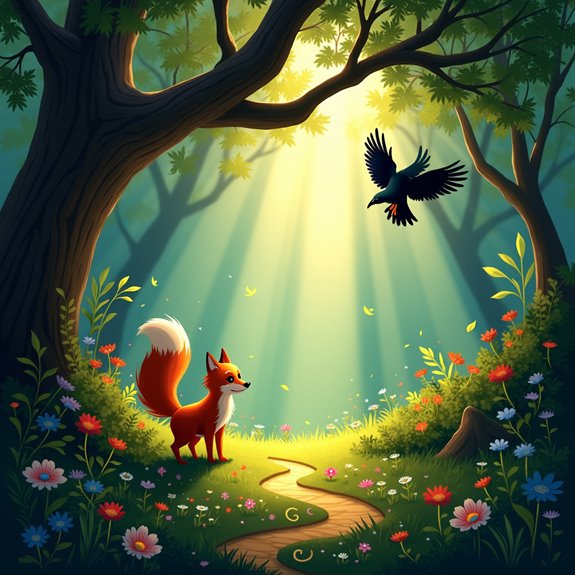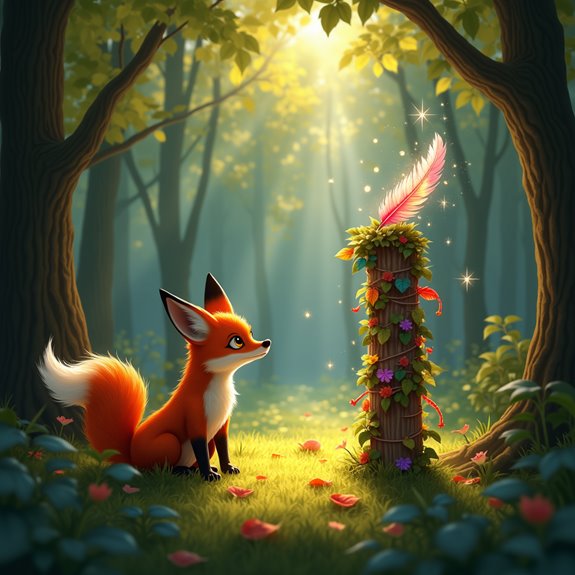Are Trickster Spirits Playing With Us Even Today?
Trickster spirits have a long-standing presence in various cultures, often embodying chaos and creativity. Today, their elusive antics—like spontaneous food shortages or erratic technology—continue to perplex and entertain. Many wonder about the deeper meaning behind these occurrences. Are they mere coincidences, or do they serve as reminders to embrace life’s unpredictability? This inquiry opens a gateway into a world where ancient wisdom meets modern existence. What implications might this carry for today’s society?
Introduction

What role do trickster spirits play in today’s world? Despite the passage of time, they continue to influence modern culture and individual lives. Many people encounter these mischievous entities through folklore, literature, and popular media. They challenge norms and expectations, providing a unique lens through which to see life’s complexities. These spirits encourage creativity and adaptability, teaching lessons about resilience and the benefits of embracing chaos. In various communities, individuals often invoke trickster spirits during storytelling sessions, keeping the tradition alive while reflecting contemporary issues. By engaging with tricksters, people can address their struggles, finding humor and wisdom in the absurdities of life. Consequently, these figures remain not just relics of the past but vibrant forces in today’s society.
Cultural Significance of Tricksters

Why do tricksters resonate so deeply across cultures? These entities embody the complexities of human behavior, showcasing the dualities of good and bad. Tricksters challenge societal norms, revealing the underlying absurdities in traditions and authority. They encourage adaptability and resilience by demonstrating that life’s unpredictability can lead to growth and transformation. From Native American folklore to African tales, tricksters serve as cultural mirrors, reflecting values and fears while providing comic relief. Their antics often push boundaries, prompting people to question established narratives. By embracing the trickster’s role, cultures can navigate crises, highlight injustices, and foster innovation. Ultimately, tricksters maintain cultural relevance, reminding societies that chaos can ignite creativity and provoke valuable introspection.
Notable Cases or Sightings

How have trickster spirits manifested in modern times? Throughout recent years, there’ve been numerous reports of playful but puzzling occurrences that many attribute to these elusive entities. In 2019, a group of campers in Colorado claimed to see their food vanish mysteriously, only to find it scattered around their campsite the next morning. Similarly, a family in New Mexico reported their electronic devices turning on and off independently, causing confusion and laughter. Even in urban areas, prankish antics like inexplicable graffiti or misplaced furniture often spark curiosity about the presence of trickster spirits. These incidents, while humorous, keep a sense of wonder alive regarding the supernatural, prompting individuals to question the unseen forces at play in their daily lives.
Common Theories or Explanations
While many attribute these playful occurrences to trickster spirits, others seek rational explanations grounded in psychology or environmental factors. Some psychologists suggest that humans have a natural tendency to perceive patterns, leading them to interpret random events as supernatural meddling. Cognitive biases, like pareidolia, can cause individuals to see faces or figures in ambiguous situations, reinforcing the belief in trickster activity. Additionally, environmental factors, such as electromagnetic fields or natural phenomena, might influence human perception, creating the illusion of trickster-like behaviors. Social and cultural contexts can further shape these interpretations, fueling stories passed down through generations. Ultimately, the line between belief and explanation blurs, leaving room for both interpretations in a world rich with mystery and intrigue.
Frequently Asked Questions
How Do Trickster Spirits Impact Modern Spiritual Practices?
Trickster spirits often inspire modern spiritual practices, fostering creativity and playfulness. They challenge practitioners to embrace uncertainty and explore the unknown, encouraging a deeper connection to self and the world, transcending traditional boundaries and awakening curiosity.
What Psychological Effects Can Belief in Tricksters Have?
Believing in tricksters fosters creativity and encourages unconventional thinking. It challenges individuals to embrace ambiguity and unpredictability in life, often leading to a more profound sense of humor and resilience in the face of adversity.
Are Trickster Spirits Associated With Specific Cultures Worldwide?
Trickster spirits are found in various cultures worldwide, from the cunning Loki in Norse mythology to the clever Coyote in Native American tales. Each character reflects unique cultural values and societal lessons through their mischievous antics.
What Are Common Symbols Related to Tricksters Across Cultures?
In various cultures, common symbols associated with tricksters include masks, animals like foxes or crows, and objects representing chaos, such as juggling balls. These elements embody deception, mischief, and the subversion of norms throughout storytelling traditions.
Can Trickster Phenomena Be Documented Scientifically?
Researchers explore trickster phenomena through psychology and sociology, analyzing behaviors and patterns that reflect societal dynamics. While documenting their impact scientifically presents challenges, they’ve highlighted the significance of these figures in cultural narratives and human experience.


